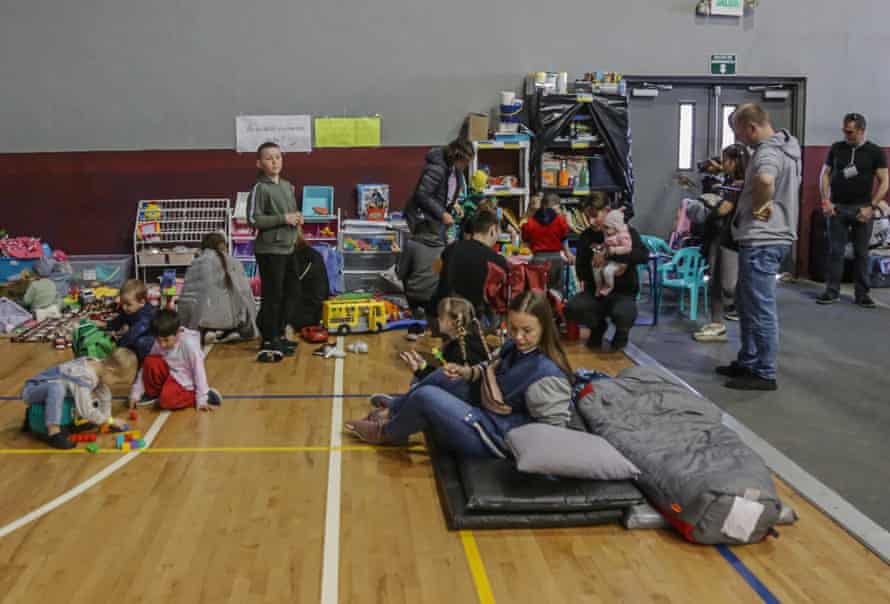[ad_1]
On a dusty field on the east side of Mexico’s sprawling capital, about 500 Ukrainian refugees are waiting in large tents under a searing sun for the United States government to tell them they can come.
The camp has only been open a week and 50 to 100 people are arriving every day. Some have already been to the US border in Tijuana where they were told they would no longer be admitted. Others arrived at airports in Mexico City or Cancún, anywhere they could find a ticket from Europe.
“We are asking the US government to process faster,” said Anastasiya Polo, co-founder of United with Ukraine, a non-governmental organization, that collaborated with the Mexican government to establish the camp. She said that after a week’s time none of the refugees there “are even close to the end of the program”.
The program, Uniting for Ukraine, was announced by the US government on 21 April. Four days later, Ukrainians showing up at the US-Mexico border were no longer exempted from a pandemic-related rule that has been used to quickly expel migrants without an opportunity to seek asylum for the past two years.
Instead, they would have to apply from Europe or other countries such as Mexico. To qualify people must have been in Ukraine as of 11 February; have a sponsor, which could be family or an organization; meet vaccination and other public health requirements; and pass background checks.
Polo said US government officials had told her it should take a week to process people, but it appeared like it was just beginning. Some of the first arrivals had received emails from the US government acknowledging they received their documents and the documents of their sponsors, but she had heard of no sponsors being approved yet.
“These people cannot stay in this camp, because it is temporary,” Polo said. More than 100 of the camp’s residents are children.

Nearly 5.5 million Ukrainians, mostly women and children, have fled Ukraine since Russia invaded its smaller neighbor on 24 February, according to the UN high commissioner for refugees.
Giorgi Mikaberidze, 19, is among the waiting. He arrived in Tijuana 25 April and found the US border closed. He complained that the U.S. government had given so little notice, because many people like himself were already in transit. He went from being just yards from the United States to about 600 miles (966km) now.
When the US government announced in late March that it would accept up to 100,000 Ukrainian refugees, hundreds entered Mexico daily as tourists in Mexico City or Cancún and flew to Tijuana to wait for a few days – eventually only a few hours – to be admitted to the US at a San Diego border crossing on humanitarian parole. A wait of two to four days was eventually shortened to a few hours as US border inspectors whisked Ukrainians in.
That special treatment ended the day Mikaberidze arrived in Tijuana.
“We want to go to America because [we’re] already here, some don’t have even money to go back,” he said.
Mikaberidze was visiting relatives in Georgia, south of Ukraine, when the Russian invasion occurred and was not able to return. His mother remains in their village near Kharkhiv in eastern Ukraine, afraid to leave her home because Russian troops indiscriminately shoot up cars traveling in the area, he said.
“She said it’s a very dangerous situation,” said Mikaberidze, who traveled to Mexico alone.
The Mexico City camp provides a safe place to wait. It was erected inside a large sports complex, so Ukrainians could be seen pushing strollers with children along sidewalks, playing soccer and volleyball, even swimming.
However, the refugees have been warned that while they are free to leave the complex, no one is responsible for their safety. Iztapalapa, the capital’s most populated borough, is also one of its most dangerous.
[ad_2]
Source link






/cloudfront-us-east-2.images.arcpublishing.com/reuters/S56Q7PLZNZPORJYKW33NIRPNYU.jpg)








